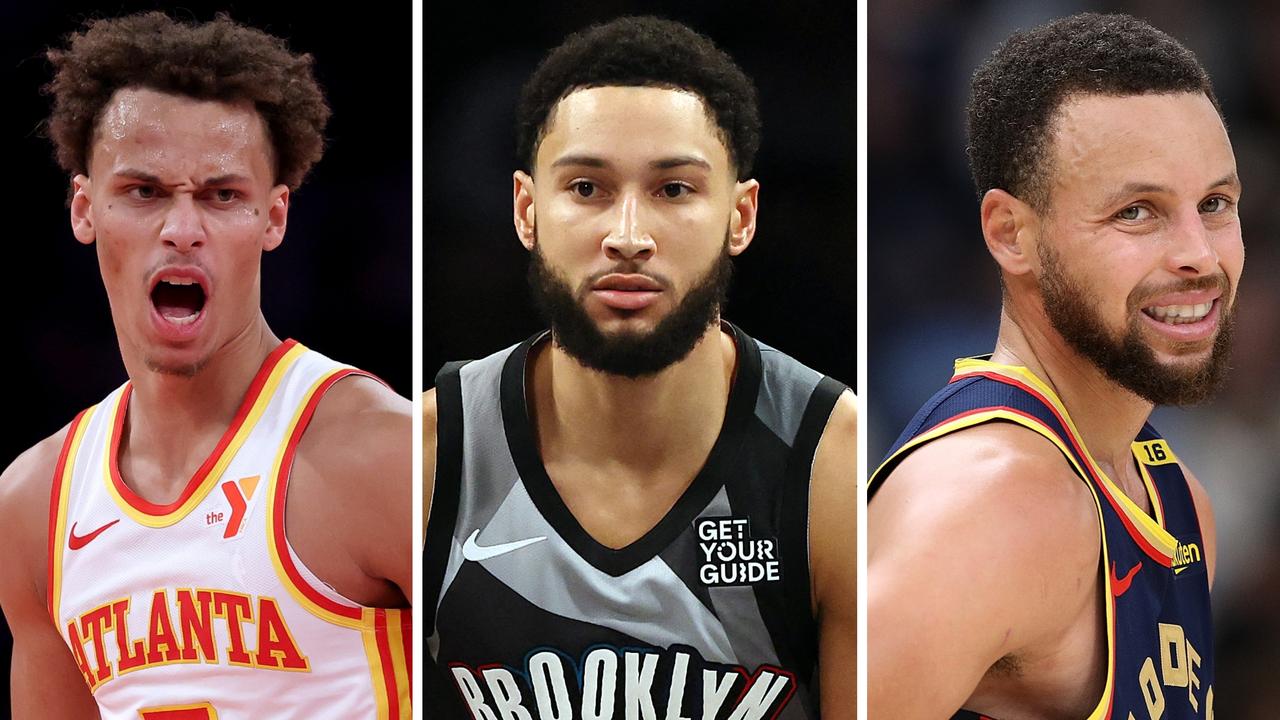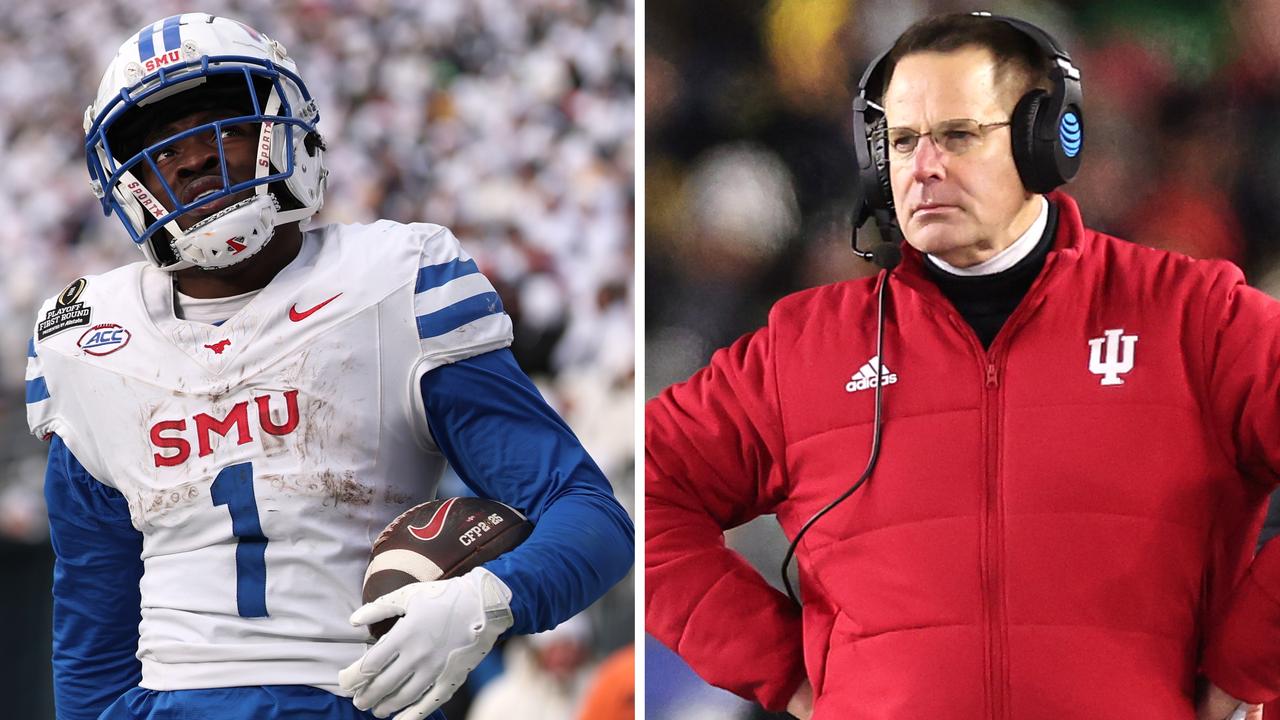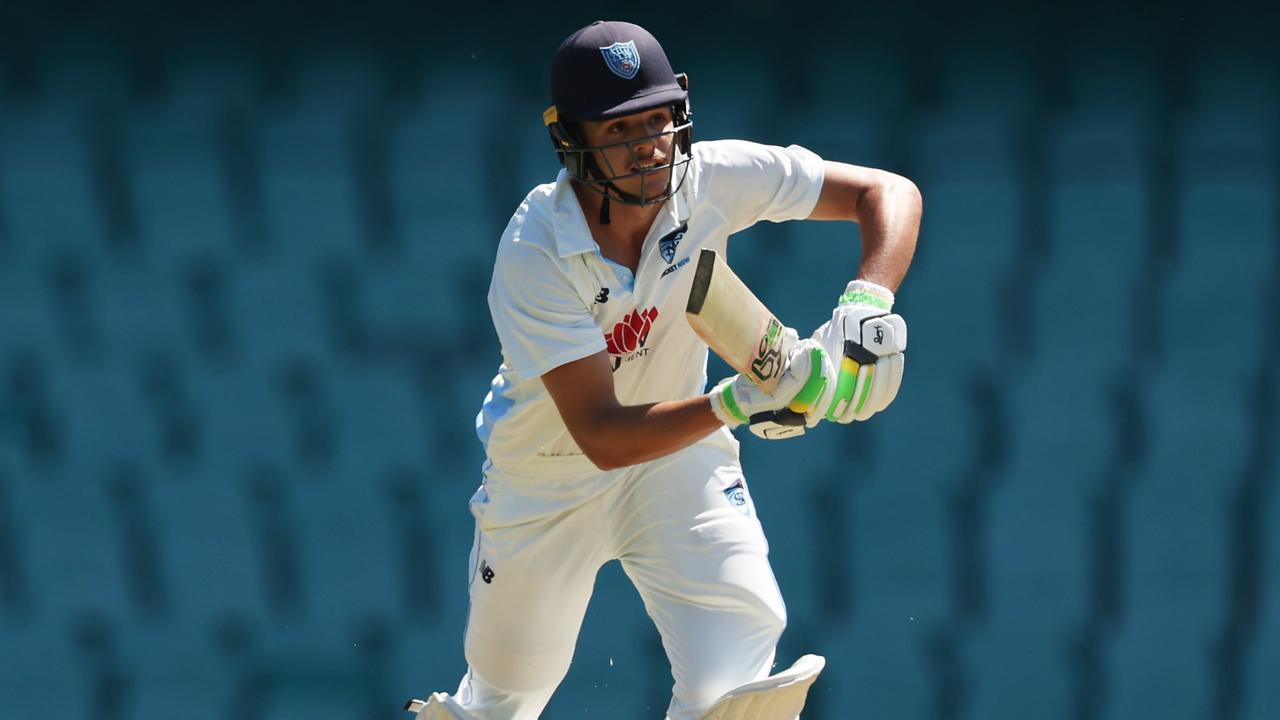It’s the hardest job in motorsport: team principal at Ferrari.
The role carries with it the hopes of the Tifosi faithful around the world, if not the entire nation of Italy. No other team boss comes under so much pressure or scrutiny.
At Ferrari, the most iconic brand on wheels, the expectation is to win. Anything else is seen as failure, for which the team boss is inevitably held responsible and often sacked.
Every practice, qualifying session and race from the 2024 FIA Formula One World Championship™ LIVE in 4K. New to Kayo? Start Your Free Trial Today >
The greatest Ferrari team principal of the modern era was undoubtedly Jean Todt, in charge from 1993 to 2007 – a golden era for the Marinello-based team, who won five-straight titles with Michael Schumacher from 2000 and six-straight constructors titles from 1999. At the time, it was an unparalleled period of dominance in the sport.
The Frenchman – just the second non-Italian to lead the iconic F1 marque – had taken over at one of Ferrari’s darkest periods and eventually led them to unprecedented heights.
Since his departure, Ferrari have struggled dismally. Having won the drivers’ championship and constructors’ championship double in 2007, Todt’s final season in charge, Ferrari retained their constructors title the following year.
That came under the man Todt had groomed to be his long-term successor, Stefano Domenicali – though Todt still had a role as a key adviser. But since 2008, Ferrari has not won either a constructors or a drivers crown.
For a team of their standing in the sport, it has been an agonising period. They have churned through more team principals in that period than almost any other team – a merry-go-round of failures and false dawns.
Meanwhile, Red Bull’s team principal Christian Horner has been in charge since 2006, and Mercedes’ Toto Wolff since 2013 – the two team’s leadership stability bringing them remarkable success.
Now, however, a marked change in Ferrari’s approach to hiring team principals has the legendary marque finally looking ready to challenge for a title again.
Here’s why Fred Vasseur could be the one to end the years of Ferrari pain.
THE POST-TODT MESS
Todt had put a plan in place when he left the team. Throughout 2007, he gave more and more control to Domenicali, before ceding the hot seat to him for the start of the 2008 campaign. Domenicali – like so many of the Ferrari bosses before and after – was a Ferrari man through and through, having been with them for well over a decade and rising through the ranks to become the top dog in their F1 team.
But despite often having a car capable of challenging for championships, Domenicali couldn’t guide the team to glory. In 2009, they won just one race.
In 2010, Fernando Alonso came within one race of victory, but a wrong strategy call — something the team became known for — in the year’s four-way Abu Dhabi finale saw Red Bull’s Sebastian Vettel win instead. In 2012, another sublime season from Alonso dragged them to a second-place constructors finish.
In 2014, F1 ushered in a radical new era: introducing bold new turbo-hybrid engines (or power units, as teams were forced to call them) in arguably the greatest technical regulation overhaul in F1 history. Ferrari had a new technical director, and 2007 title winner Kimi Raikkonen was back. They were optimistic about the new rules returning them to the front of the grid.
But Ferrari were atrociously off the pace from the start. Just three races in, Domenicali resigned, ending 23 years with the company.
He was replaced by Marco Mattiacci, the president and CEO of Ferrari North America – a marketer with absolutely zero F1 experience.
Once again, Ferrari was looking internally, but it was still an utterly bizarre choice.
In the months that followed, Ferrari would lurch from catastrophe to controversy seemingly by the week. Riven by internal politics, they would fire a host of key figures – their veteran engine chief and then the president of Ferrari itself, Luca di Montezemolo, who had been in that role for two decades.
Soon after, they lost their star driver: Alonso, who walked away from a £20m-a-year deal with more than two seasons remaining.
They finished the season winless for the first time in 21 years and a lowly fourth in the Constructors’ Championship. But just a couple of weeks later, Mattiacci was sacked – more than that, he was totally exiled from Ferrari altogether.
Maurizio Arrivabene took over one day after the season ended, their third team principal in seven months after Domenicali had been in charge for seven years.
Inside two weeks, Arrivabene had sacked the head of engineering and the chief designer, with their chief press officer and tyre performance analyst also among the bloodletting.
It was one of the worst, most muddled seasons in Ferrari’s long history.
The restructuring and chaos of 2014 sparked an improved 2015 – though it is hard to see how they could have got worse. Alonso’s replacement Sebastian Vettel won three times, Ferrari’s target that season, but they were still a long way off Mercedes.
While Arrivabene did bring some improvements, he was once again a Ferrari man and not an F1 expert: he had spent most of his career working for Ferrari’s long-time sponsor Philip Morris before taking over the Marinello team.
While they finished second in 2015, third in 2016, and second again in 2017, much of that can be put down to the technical genius of Mattia Binotto, who turned Ferrari’s engine from atrocious at the outset of the new regulations in 2014 to arguably the best in the competition. By mid-2016, Binotto had been promoted to the team’s top technical officer, where in 2017 and 2018 he made significant strides in the car’s development, turning it into a regular race contender.
But Arrivabene was still in charge – and Ferrari were still not winning.
Arrivabene made crucial mistakes, including clashing with star driver Sebastian Vettel in 2018. That year, the team’s direction for their car development was clearly wrong at the start of the season – and by the time they changed course, it was too late. There were major strategic errors too, over team orders and tyres.
Again, they finished second in the standings.
Arrivabene and technical boss Binotto were fighting for control of the team’s direction, their differing views leading to tension by the end of the season. Binotto – who was widely regarded in the paddock for his work in developing the car – was in hot demand, though Arrivabene called this “fake news” and an attempt to “destabilise” the team. Ferrari acted quickly.
Four seasons after taking charge, Arrivabene was punted, with Binotto promoted for the 2019 season.
THE BINOTTO BUNGLES
Binotto’s first season showed promise – another second-place finish after major restructuring across the team.
But 2020 was a disaster in all the worst ways. The car was a nightmare to drive, suffered major reliability issues and worse, was seriously lacking in power. Ferrari finished sixth, their worst result since 1980. Somehow, Binotto survived that – and even the loss of Sebastian Vettel, who Binotto had effectively demoted from being the clear number one driver in 2019 to level with Charles Leclerc in 2020.
Binotto – the engineer – had taken less of a role in the technical side of things in 2020, a move which backfired disastrously.
The Italian’s great dream was to revitalise Ferrari as an Italian force – to rebuild completely and go back to their roots, just like Todt had done in the 90s.
“I always say to my guys it’s more important to be Ferrari than winning,” Binotto said in 2021. “Because winning will be a simple consequence. If we are capable of being Ferrari and working well, the winning will be the consequence.”
In 2021, Ferrari backed Binotto – primarily because sweeping new regulations were being put in place in 2022, and they believed Binotto could deliver an all-new car and hit the ground running.
They delivered a better package in 2021, and improved to third despite going winless for a second straight season.
But they had bet all their chips on prioritising their 2022 car.
It meant the team was out of the limelight, deliberately choosing to ignore short-term pain of watching Mercedes and Red Bull battle for the title.
Then came 2022, and Binotto looked to have turned things around. They went one-two in the first two races, a staggering success, before Leclerc won again in Australia. Suddenly they had a competitive car and their goal of winning another title seemed within reach.
But things unravelled in spectacular fashion.
The team began to look totally amateurish as driver errors compounded strategic blunders. The car began to suffer ongoing reliability issues.
Binotto tried to help things by protecting his subordinates. If a major error was made, he would deny it, downplay, and simply refuse to blame a team member or department.
At worst, it made him seem deluded about Ferrari’s prospects. At the same time, he was pulling back on his duties, speaking to the media less and less – and increasing the workload on key team members like trackside boss Laurent Mekies, who had to balance sponsor and media appearances with his race responsibilities.
Behind the scenes, there were fears Binotto was incapable of making the brutal calls on his team hierarchy needed to fix their strategic woes.
Ferrari were out of the title race halfway through the season as Red Bull were runaway champions. Ferrari would hold off Mercedes for second place – just. But the collapse of their title challenge, and rumours of a strained relationship between Binotto and Leclerc, not to mention a poor relationship with Ferrari CEO Benedetto Vigna, were enough for Ferrari to axe their long-serving man.
After 28 years at the company, and four seasons as team principal, Binotto was gone.
“I am leaving a company that I love, which I have been part of for 28 years, with the serenity that comes from the conviction that I have made every effort to achieve the objectives set,” said a regretful Binotto.
While rivals Red Bull (Christian Horner) and Mercedes (Toto Wolff) had been characterised by long-term stability thanks to having a team principal in charge for many years, Ferrari’s mismanagement and instability looked set to continue.
Russell FLIPS car in big final lap crash | 01:57
THE NEW MAN IN
Ever since Todt’s departure, Ferrari had chosen team principals based on their connections to Ferrari – hiring from within or bringing executives across from a major sponsor.
But after 2023, Ferrari CEO Vigna took a different approach. Like Todt, their new team principal Frederic Vasseur is a Frenchman, but the similarities go well beyond that.
Before being picked up by Ferrari, Todt had been a rally driver before moving into management as Director of Racing for Peugeot. He guided the development of the team that would go on to dominate in the World Rally Championship, win multiple Dakar Rallies, as well as the Le Mans 24 hours. In essence, he was a proven team boss – an exceptional leader and man-manager as much as a car developer.
Vasseur, similarly, had a long history of leadership in motorsport. An engineering graduate, he founded the ASM team (later called ART) that dominated the junior formula series and went on to become the breeding ground of many future champions.
That included the likes of Lewis Hamilton, Nico Rosberg, and Sebastian Vettel in the 2000s. The list of other F1 drivers to graduate from ART is so extensive as to be almost ridiculous: among the current drivers, it includes Nico Hulkenberg and Esteban Ocon.
In 2016, Vasseur was called up to the big leagues – taking over at Renault as F1 team principal (that year, coincidentally, Ferrari’s Charles Leclerc raced for Vasseur’s ART). Renault were back as constructors for the first time since 2011, and performed reasonably well – finishing eighth in the championship.
But Vasseur’s time at Renault lasted just one year: the team was mired in political drama, with Vasseur in constant conflict with Cyril Abiteboul.
Vasseur moved to Sauber a few races into the 2017 season, an F1 basket-case who were dead last in 2016.
He immediately made a bombshell call. The team had just announced they would end an engine deal with Ferrari and move to Honda engines from 2018 onwards – but Vasseur forced a U-turn on that deal, cancelling the swap.
Vasseur was not afraid of bold tactical moves, while he had a reputation for developing young drivers into top talents.
For the 2018 season, Sauber’s links to Ferrari saw Vasseur land its academy’s rising star Charles Leclerc for his debut season.
Leclerc shined in his rookie year, earning a sixth-place finish in Azerbaijan, the team’s best result in three years. The team managed to rise to eighth in the standings by the end of the season.
Vasseur pulled off another driver coup – convincing Ferrari’s former world champion Kimi Raikkonen to join for 2019 when the Italian team poached Leclerc.
Vasseur’s success continued down the years at Sauber – which became known as Alfa Romeo from 2019 onwards. He would lead them to eighth-placed finishes in 2019 and 2020, ninth in 2021, and a remarkable sixth place in 2022, their best result in a decade.
He had turned a sinking ship around and moulded them into a consistent side despite limited resources – and consistently churned out cars that effectively used Ferrari’s engines.
No wonder Ferrari were interested.
HOW VASSEUR HAS CHANGED FERRARI
He arrived at Marinello after the 2022 season – and just like at Sauber, he brought about immediate changes.
Soon after Vasseur’s arrival, Leclerc said: “He arrived with very clear ideas and understands a team that’s very big.
“Within a few days he understood what had to be done and he did it. It’s positive.”
In the early days, Carlos Sainz said: “Ferrari brought him in for a different approach. It’s going well. I expect he’ll take more and more control as we go.”
Head of strategy Inaki Rueda was shifted back to the factory in a totally different role, with Vasseur boldly promoting the relatively inexperienced strategist Ravin Jain. Another veteran strategist, Claudio Albertini, was moved to look after the driver academy – meaning the number of people trackside was immediately cut from eight to six.
Laurent Mekies’ responsibilities were changed significantly to focus completely on the trackside part of things, having been sidetracked by taking on Binotto’s media duties the year before.
Leclerc said: “His job is to put people in the right positions, and he’s excellent at it. Amazing.”
Leclerc, who came through ART and drove under Vasseur in his rookie 2018 season at Sauber, obviously has high regard for the team principal.
It’s something that can prove crucial in the success or failure of a team boss – just as Todt found out in 1996 at Ferrari, three years after he took over.
Results hadn’t been coming, and Todt was on thin ice. Then their new driver signing Michael Schumacher saved Todt’s job – and turned the fortunes of Ferrari for the next decade.
“The situation was disastrous at the beginning,” Todt told La Stamp. “In ‘96 there was a lot of talk about my dismissal. Michael had just arrived and saw that my plan was right, the people who were about to arrive and with whom I was dealing in secret corresponded to our plan.
“This is why he intervened and said: ‘If Todt leaves, I’ll leave too.’”
Vasseur hasn’t quite faced that level of crisis, but his strong relationship with the drivers has been crucial to the team’s growth under his watch.
Yet his first season in 2023 was a difficult one – largely because the car’s development was mostly completed before his arrival.
That Ferrari was fast enough on qualifying, but tyre issues and cornering problems saw it thrashed by Red Bull’s unstoppable RB19.
Red Bull won all-but-one race in an all-conquering season – but that sole race, in Singapore, was a Ferrari win.
Ferrari would slip to third, but made significant strides throughout the season, missing out on second spot in the constructors’ championship by just three points to Mercedes.
Behind the scenes, Vasseur was able to take significant control of the team. At Ferrari, famed for their political machinations and influence from top-down, that was no mean feat – and the lack of control had brought about the ruin of plenty of former team bosses at Marinello.
Verstappen OUT as fire erupts under car! | 02:18
The F1 juggernaut is large and unwieldy, a tanker ship that takes plenty of time to manoeuvre. But slowly and surely, Ferrari were being sculpted into an effective operation, guided by their team principal’s steady hand.
And when they turned out the 2024 car, it was clear from the start that Vasseur’s influence had reaped major rewards.
Ferrari stood on the podium in the first two races, before claiming a one-two finish in Australia.
McLaren’s Lando Norris said: “You’ll probably see the most impressive has been Ferrari in how they’ve been able to take a very big step I would say. Probably one of the biggest steps from last year to this year.”
Meanwhile, Vasseur has been typically bold in the driver market, landing legendary Mercedes star Lewis Hamilton for 2025.
But they’re not focusing on that just yet, because for the first time in years, Ferrari are well and truly back in the title race.



































Discussion about this post